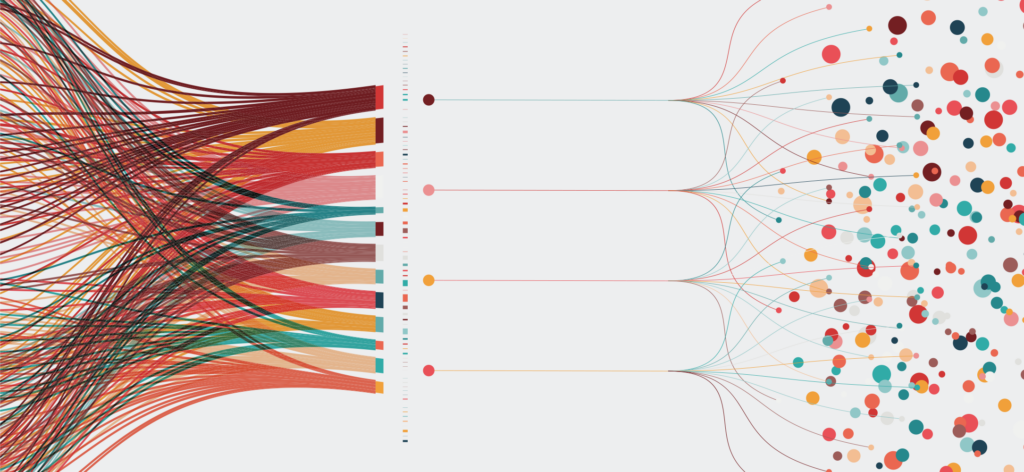Data has become integral to how a modern company strategizes, operates, and executes on its goals and objectives. For marketers, it’s all about understanding customers bette than ever before, and delivering tailored messaging, offers, and customer experiences to achieve these goals.
Being able to accurately target buyers throughout the customer journey becomes a reality when companies deploy advanced data management platforms like the customer data platform (CDP). By leveraging a CDP as part of your larger marketing technology stack, all types of customer data can be ingested, combined into a unified profile, and shared with the right technology solution to affect content, campaigns, and experiences.
But as any data-driven marketer knows, not all data is the same. Depending on the type of data management platform you purchase for your particular needs, you’ll have different features for data ingestion and integration.
So, prior to getting too deep in the weeds on customer data management, it’s important to ask an important question – what is the difference between structured and unstructured data?
What is Structured Data?
Structured data is data that is predefined. This means each of the data points have assigned fields in a spreadsheet, table, or database. Typical examples of fields would be someone’s name, address, phone number, income, transaction history, hobbies, etc. For data to be structured, someone like an enterprise architect must create a data model to determine which types of data go into what fields.
Structured data is the end goal for all data. The more structured it is, the more valuable and useful it is to different people and applications. Structured data can be more easily input from a data entry perspective, can be searched against more effectively, and can be changed and integrated with other data where fields can be mapped to like fields.
What are the Different Types of Structured Data?
CDPs are ideal platforms for structured data, as they can use that data to create unified profiles for individual customers. Enterprises can then use those unified profiles as a single source of truth for an organization to market and sell against. CDPs take in all forms of structured data – from demographic to firmographic, and from behavioral to transactional.
Demographic Data
Demographic data is data related to personal and geographic attributes, like:
- Age
- Current Location
- Mailing Address
- Name
- Telephone number
Firmographic Data
Firmographic data is data related to companies, used for account-based marketing (ABM) campaigns. This data can include:
- Company Address
- Company Name
- Industry
- Number of Employees
- Revenue
Behavioral Data
Behavioral data is data related to deeper insights into your customers. This allows brands to do more effective audience segmentation, targeting, and behavioral marketing. Insights include:
- Email Open Rates
- Product and Service Usage Patterns
- Purchase Patterns
- Social Media Engagement
- Videos and Content Consumed
- Web Activity history
Transactional Data
Transactional data is data related to how a customer transacts with your business, including:
- Credit Card Payments
- Insurance Claims
- Invoices
- Purchase Orders
- Sales Orders
- Shipping Documents
What is Unstructured Data?
Most data unfortunately is not so nicely structured, but is totally raw and unstructured. In fact, unstructured data makes up 80-90% of all data in the world today. This unstructured data usually gets dumped into a data lake or something similar. A data model can be developed to structure the data so it can be used for business and customer value.
One way to look at all this unstructured data is the potential opportunity to deploy it for various business needs and applications. If it can be structured, and combined into unified customer profiles, it can help you understand and market to your customers holistically, from customizing content, messaging, and the customer experience, to delivering value to customers and prospects.
What are the Different Types of Unstructured Data?
Different types of unstructured data include:
- Audio Files
- Images
- Video
- PDFs
- PPTs
- Social Media Posts, Comments, and Likes
- Word documents
What is Semi-Structured Data?
Semi-structured data is a lot like the name implies. It is unstructured data that has some level of metadata tagging to identify what the data points are about.
For example, an image may be unstructured data. If you add image ALT tags, it gives some information on the image subject matter. This transforms it into semi-structured data.
Semi-structured data is the largest growing area of data. This is due to the increase of meta tagging across documents, images, and video to help classify and categorize the content for search engine optimization and organization.
What are the Different Types of Semi-Structured Data?
Different types of semi-structured data includes:
- Compressed Files
- Emails (unstructured body text, but with structured data like subject line and send date)
- Images (that include metadata)
- Webpages
Getting Value from Data
In order to get value from your data, you need to get it in shape so it can be combined into unified profiles. Data collection needs to be standardized in order to integrate successfully. And, more often than not, that data is fractured and resides in disparate silos across your enterprise and business units.
Many brands are using CDPs to bring unstructured, structured, and semi-structured data together, integrate it, and deliver it to relevant business teams to affect the customer experience. They are also using CDPs to ensure that data is secure and compliant with emerging global data privacy regulations.
With data that is standardized and integrated into unified profiles, teams across the company can now work together using a single source of truth for customer data. Transforming structured, unstructured and semi-structured data with a CDP can be the differentiator brands need to stay ahead of the competition.



